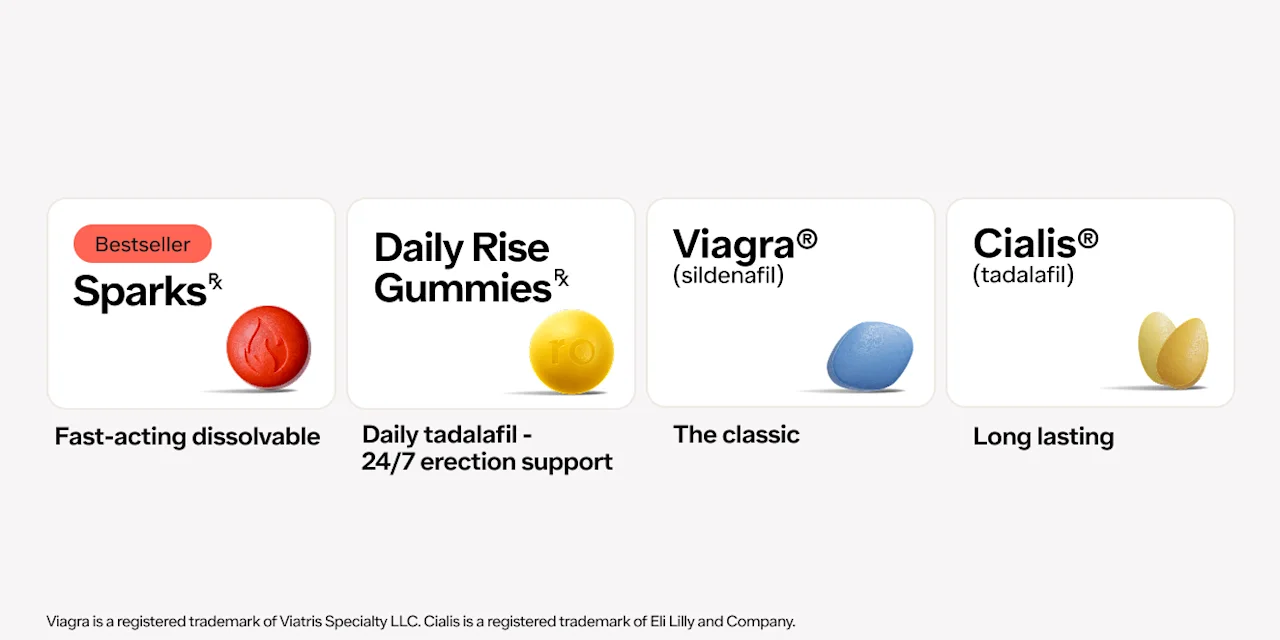Here's what we'll cover
Here's what we'll cover
More than half of American men between the ages of 40 and 70 experience erectile dysfunction (ED). This is defined as being unable to get or keep an erection sufficient for a satisfying sex life (Sooriyamoorthy, 2022).
Oral medications such as sildenafil (Viagra) and tadalafil (Cialis) work well for most men with ED, but when ED pills don’t work or can’t be taken, erectile dysfunction injections—formally called intracavernosal injections—may be an effective option.
How do ED injections work, and what are the risks and benefits? Here’s what you should know about penile injections.
What is an erectile dysfunction injection?
ED injections involve injecting medication into the penis to achieve an erection. The medications used for these injections work differently than oral ED medications like Viagra (sildenafil). Both Viagra and Cialis (tadalafil) are in a class of drugs called phosphodiesterase-5 (PDE-5) inhibitors, which work by dilating vessels to keep blood in the penis longer. Even after taking ED pills, you’ll still need sexual stimulation to get an erection. Penile injections, on the other hand, trigger a spontaneous erection when injected without the need for sexual stimulation (Krzastek, 2019).
Injecting medications directly into the penis increases blood flow by acting on blood vessels at the injection site. ED injection treatments relax the smooth muscle of the blood vessel walls, leading them to dilate. This results in the penis filling with blood fairly quickly (Krzastek, 2019).
The time to administer an ED injection is just before a man plans to have sex. Erections typically take 5 to 20 minutes to form and last for about 30 to 60 minutes. They can last longer, and that’s the downside because a prolonged erection can damage tissue in the penis (see injection risks below) (MedlinePlus, 2018).
How are ED injections given?
While the idea of a shot in the penis may deter some men, the needles are small, and the actual injection is often compared to a pinprick. ED injections can be self-administered at home after getting guidance from your healthcare provider. The process is straightforward and involves the following basic steps (MedlinePlus, 2018):
Store the medication based on recommendations (refrigeration is typical).
Prepare the vial and syringe according to the directions.
Clean your hands and injection site as directed.
Retrieve the prescribed dose of medication from the vial by pulling up the syringe's plunger, then tapping out air bubbles.
Insert the needle into the side of the penis (right or left) while avoiding the following areas: the base or head (tip) of the penis and the top or bottom of the shaft, which contains nerves (at the top) and the urethra (below).
Put pressure on the site after injection for a few minutes to limit bleeding.
Properly dispose of the needle in a needle-safe container.
Only one injection is required for an erection since the blood vessels on both sides of the penis are connected. Your healthcare provider may suggest switching sides to limit potential scarring.
Unlike oral medications like Viagra, which you can take once every 24 hours, ED injections should be limited. Men are advised to use penile injections no more than three times a week, with at least 24 hours between injections. It’s essential to work with your healthcare provider to determine proper doses based on the severity of ED and other health considerations (MedlinePlus, 2018).
What medications are used for penile injection therapy?
If you’re considering ED injections, it’s important to know that dosages and formulations for these drugs are highly tailored for each man. Getting advice and instructions from a healthcare provider is a critical first step.
Three primary ED injection medications are often combined. These include (Shindel, 2022):
Prostaglandin E1
Prostaglandin E1 (PGE1)—also known as alprostadil (brand names Caverject and Edex)—is the most commonly used ED injection medication. It works by relaxing the smooth muscles and increasing blood flow, which leads to an erection.This medication is FDA-approved for use alone, but it’s also commonly combined with two other medications: papaverine and phentolamine (Hew, 2022).
Papaverine
Papaverine, a non-selective phosphodiesterase (PDE) inhibitor, has been used to treat numerous diseases. It works by relaxing blood vessels, leading to increased blood flow. It was first used as an erectile dysfunction injection in 1988. While it can be used alone with success, there is a greater risk of a prolonged erection. For this reason, it’s usually combined with other ED injection medications (MedlinePlus, 2017; Ferguson, 2013).
Phentolamine
Phentolamine is an alpha-adrenergic antagonist that can be used to treat hypertension. When injected into the penis, it relaxes smooth muscles, increasing blood flow. It’s often combined with papaverine (bimix) or both papaverine and alprostadil (trimix) to treat ED.
Getting a prescription
Alprostadil comes in a liquid when prescribed for penile injections (brand names Caverject, Edex, and Prostin VR). Filling a prescription for bimix or trimix formulas requires going through a compounding pharmacy, which is licensed to combine medications.In some cases, a fourth drug—atropine sulfate—may be added to create what’s known as quadmix.
When it comes to dosage, your healthcare provider will usually prescribe the lowest dose needed for a firm erection. According to American Urological Association guidelines, an in-office injection test dose should be given to all men considering penile injections to manage ED. This helps you and your healthcare provider figure out the best dosage that will lead to an erection while reducing the risk of side effects, such as a prolonged erection (priapism) (Krzastek, 2019)
It’s important to tell your healthcare provider about any medications or supplements you may be taking. Most men are advised to steer clear of taking any oral ED pills in the days before or after an ED injection—your healthcare provider can give you specific guidelines. Oral ED pills and penile injections have similar effects and can lead to a prolonged erection that can permanently damage the penis.
These medications can lead to problems if not taken in the correct dosage. In some cases, medications may be combined under the supervision of a healthcare provider if a man is experiencing severe ED.
Are penile injections an effective ED treatment medication?
Studies show that about 90% of men who use penile injections can achieve an erection and that patients who use injections consistently have high satisfaction rates(Sooriyamoorthy, 2022; Krzastek, 2019).
Despite this success rate, long-term studies show up to 80 percent of men don’t continue with ED injections over time (Shindel, 2022). Discontinuation rates are typically highest within 3–6 months of starting and are usually due to pain, fibrosis, lack of a sexual partner, loss of spontaneity, and anxiety. Researchers suggest that patient counseling, education, and regular patient follow-up are critical for this treatment (Chung, 2019).
Combining ED medications
Some men alternate injection therapy with other types of ED treatment. For instance, they may sometimes use Viagra or another PDE-5 inhibitor but use an injection when they want a firm erection for a more extended period.
Some men who cannot achieve an erection using injections may work with their physician to combine injections and PDE-5 inhibitors. The risk of priapism is higher in these cases, so combining options is typically only considered in men with severe ED and should only be done under a healthcare provider’s guidance (Shindel, 2022)
Another option not requiring an injection is alprostadil in pellet form inserted into the urethra, which goes by the brand name MUSE. If using alprostadil in pellet form or a cream (Vitaros), men need to wear a condom if their partner could be pregnant, as the effects on pregnancy are unknown (Shindel, 2022).
Who can get penile injections?
ED injections may be a good option if you are not achieving an erection using oral medications.Men who can manage self-injection have found it is an effective approach to getting an erection, even if they’re having problems with sexual stimulation (Krzastek, 2019).
ED injections are generally not recommended for men with mild ED, as they could lead to priapism. Men with a history of priapism, Peyronie’s disease, or bleeding disorders may be advised to avoid ED injections (Krzastek, 2019).
What are the side effects of erectile dysfunction injections?
Healthcare providers start with the lowest dosage and incrementally work up to help prevent side effects. Side effects can range from minor to severe and may include (MedlinePlus, 2018):
Bleeding, bruising, or redness at the injection site
Pain in the penis, testicles, and surrounding area
Headache, back pain, or vision problems
Low blood pressure
Fast heartbeat
Swollen veins in the legs
Swelling of the penis
Scar tissue (nodules or hard areas on the penis)
Priapism (prolonged erection)
Some men also report mild pain after injecting. Like other types of injections, there’s a small but normal risk of bruising or bleeding at the injection site. Knowing where to inject the needle helps avoid temporary swelling and irritation. Even with proper technique, some men may experience scarring.
When to seek medical attention
See a healthcare provider immediately if you’re experiencing pain or any bleeding that lasts more than a few minutes after the injection. While it’s rare, taking too much of the ED injection medications can cause fainting, dizziness, blurred vision, nausea, and pain in the penis that does not go away. In cases of overdose, men should contact a poison control center at 1-800-222-1222 or dial 911 (MedlinePlus, 2018).
Treating priapism
Priapism is typically preventable by carefully dosing. The danger of a prolonged erection is that the pooled blood limits the flow of fresh oxygenated blood, which can lead to tissue death. If you experience priapism while using an ED injection, you may be advised to use a cold compress on the area and take a decongestant, such as Sudafed or Sudafed PE, that contains the medications pseudoephedrine or phenylephrine. These constrict blood vessels (Silberman, 2022).
If an erection lasts longer than four hours, it’s considered a medical emergency. Depending on your location, this may mean a trip to the emergency room. At a medical facility, oral and intravenous drugs can be given. If needed, the blood may be drawn out of the penis using a needle (Silberman, 2022).
If the erection is not relieved quickly, priapism can lead to penile scarring, deformity, and ED. Research shows waiting even a few extra hours can lead to lasting damage. If treated within 6–12 hours of onset, you can usually avoid permanent injury. However, tissue injury is visible after 12 hours. After 24 hours, there is more widespread tissue destruction. If an erection continues for 36 hours, there may be permanent erectile dysfunction (Silberman, 2022).
Cost of ED injections
Depending on the medication and pharmacy, the cost can range from about $5 to $30. Insurance companies and Medicare programs typically do not cover ED injections. However, it’s best to check your coverage. If ED is caused by a medical condition like prostate cancer, it may be covered. If the cost is not covered, it may help to talk to your healthcare provider about low-cost options (Shindel, 2022).
DISCLAIMER
If you have any medical questions or concerns, please talk to your healthcare provider. The articles on Health Guide are underpinned by peer-reviewed research and information drawn from medical societies and governmental agencies. However, they are not a substitute for professional medical advice, diagnosis, or treatment.
Carson, C. (2020). Peyronie’s disease: New paradigm for the treatment of a unique cause of erectile dysfunction. Postgraduate Medicine , 132 (sup4), 4–8. doi:10.1080/00325481.2020.1805865. Retrieved from https://pubmed.ncbi.nlm.nih.gov/33156731/
Chung, E. (2019). A review of current and emerging therapeutic options for erectile dysfunction. Medical Sciences , 7 (9), 91. doi:10.3390/medsci7090091. Retrieved from https://www.ncbi.nlm.nih.gov/pmc/articles/PMC6780857/
Ferguson, J. E. & Carson, C. C. (2013). Phosphodiesterase type 5 inhibitors as a treatment for erectile dysfunction: Current information and new horizons. Arab Journal of Urology , 11 (3), 222–229. doi:10.1016/j.aju.2013.07.009. Retrieved from https://www.ncbi.nlm.nih.gov/pmc/articles/PMC4443003/
Hew, M. & Gerriets, V. (2022). Prostaglandin E1. StatPearls. Retrieved on Aug. 1, 2022 from https://www.ncbi.nlm.nih.gov/books/NBK546629/
Krzastek, S. C., Bopp, J., Smith, R. P., & Kovac, J. R. (2019). Recent advances in the understanding and management of erectile dysfunction. F1000Research , 8 , 102. doi:10.12688/f1000research.16576.1. Retrieved from https://www.ncbi.nlm.nih.gov/pmc/articles/PMC6348436/
MedlinePlus. (2018). Alprostadil urogenital. Medlineplus Drug Information . Retrieved on Aug. 1, 2022 from https://medlineplus.gov/druginfo/meds/a695022.html
MedlinePlus. (2017). Papaverine. Medlineplus drug information . Retrieved on Aug. 1, 2022 from https://medlineplus.gov/druginfo/meds/a682707.html
MedlinePlus. (n.d.). Drugs that may cause erection problems. MedlinePlus Medical Encyclopedia . Retrieved on Aug. 1, 2022 from https://medlineplus.gov/ency/article/004024.htm
Sandean, D. & Lotfollahzadeh, S. (2022). Peyronie disease. StatPearls. Retrieved on Aug. 1, 2022 from https://www.ncbi.nlm.nih.gov/books/NBK560628/
Shindel, A. & Lue, T. (2022) . Medical and surgical therapy of erectile dysfunction . Endotext. Retrieved from https://www.ncbi.nlm.nih.gov/books/NBK278925/
Silberman, M., Stormont, G., Leslie, S., & Hu, E. (2022) . Priapism. StatPearls. Retrieved on Aug. 1, 2022 from https://www.ncbi.nlm.nih.gov/books/NBK459178/
Sooriyamoorthy, T. & Leslie, S. (2022). Erectile dysfunction . StatPearls . Retrieved on Aug. 1, 2022 from https://www.ncbi.nlm.nih.gov/books/NBK562253/
Tsertsvadze, A., Fink, H. A., Yazdi, F., et al. (2009). Oral phosphodiesterase-5 inhibitors and hormonal treatments for erectile dysfunction: A systematic review and meta-analysis. Annals of Internal Medicine; 151 (9), 650-61. doi:10.7326/0003-4819-151-9-200911030-00150. Retrieved from https://pubmed.ncbi.nlm.nih.gov/19884626/










